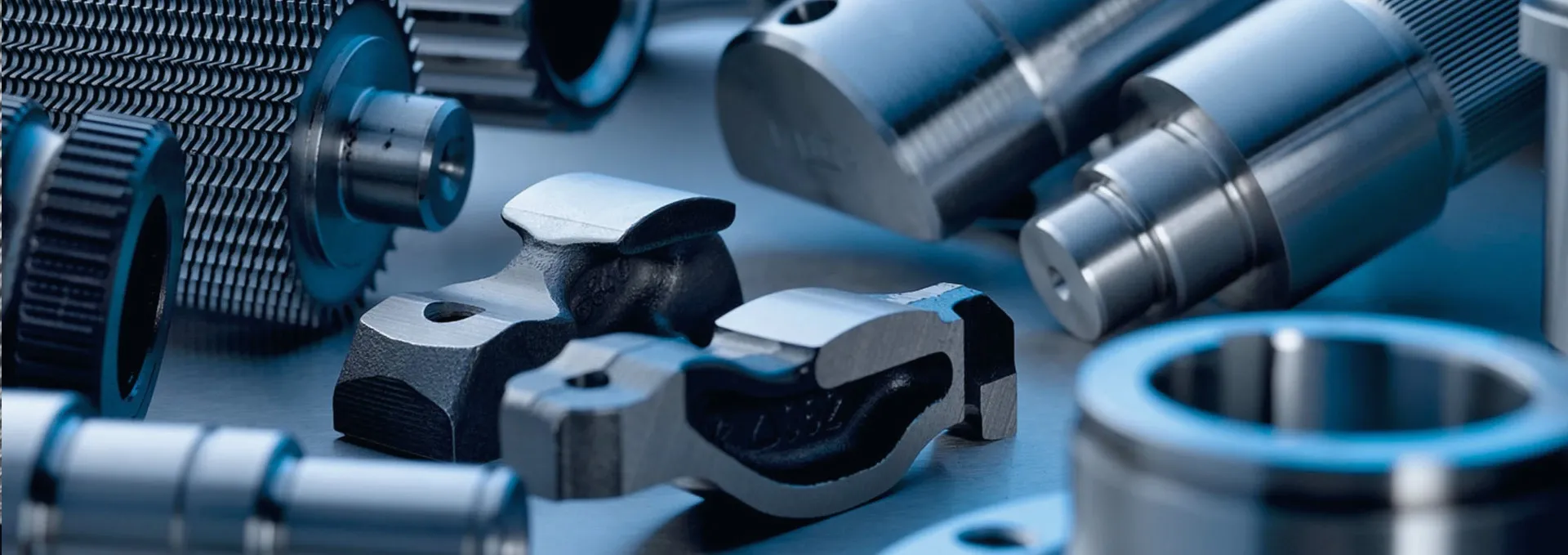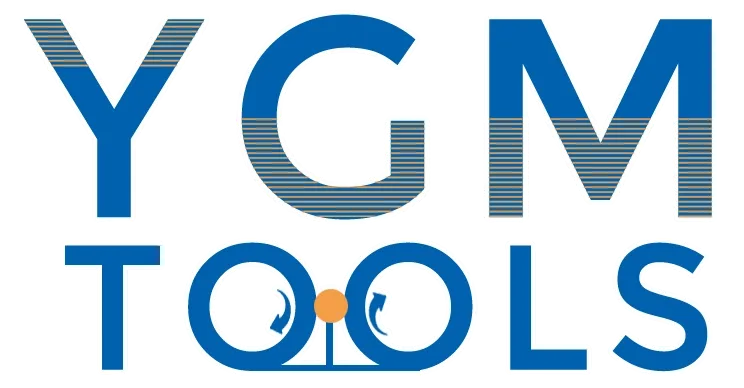
-
 Afrikaans
Afrikaans -
 Albanian
Albanian -
 Amharic
Amharic -
 Arabic
Arabic -
 Armenian
Armenian -
 Azerbaijani
Azerbaijani -
 Basque
Basque -
 Belarusian
Belarusian -
 Bengali
Bengali -
 Bosnian
Bosnian -
 Bulgarian
Bulgarian -
 Catalan
Catalan -
 Cebuano
Cebuano -
 Corsican
Corsican -
 Croatian
Croatian -
 Czech
Czech -
 Danish
Danish -
 Dutch
Dutch -
 English
English -
 Esperanto
Esperanto -
 Estonian
Estonian -
 Finnish
Finnish -
 French
French -
 Frisian
Frisian -
 Galician
Galician -
 Georgian
Georgian -
 German
German -
 Greek
Greek -
 Gujarati
Gujarati -
 Haitian Creole
Haitian Creole -
 hausa
hausa -
 hawaiian
hawaiian -
 Hebrew
Hebrew -
 Hindi
Hindi -
 Miao
Miao -
 Hungarian
Hungarian -
 Icelandic
Icelandic -
 igbo
igbo -
 Indonesian
Indonesian -
 irish
irish -
 Italian
Italian -
 Japanese
Japanese -
 Javanese
Javanese -
 Kannada
Kannada -
 kazakh
kazakh -
 Khmer
Khmer -
 Rwandese
Rwandese -
 Korean
Korean -
 Kurdish
Kurdish -
 Kyrgyz
Kyrgyz -
 Lao
Lao -
 Latin
Latin -
 Latvian
Latvian -
 Lithuanian
Lithuanian -
 Luxembourgish
Luxembourgish -
 Macedonian
Macedonian -
 Malgashi
Malgashi -
 Malay
Malay -
 Malayalam
Malayalam -
 Maltese
Maltese -
 Maori
Maori -
 Marathi
Marathi -
 Mongolian
Mongolian -
 Myanmar
Myanmar -
 Nepali
Nepali -
 Norwegian
Norwegian -
 Norwegian
Norwegian -
 Occitan
Occitan -
 Pashto
Pashto -
 Persian
Persian -
 Polish
Polish -
 Portuguese
Portuguese -
 Punjabi
Punjabi -
 Romanian
Romanian -
 Russian
Russian -
 Samoan
Samoan -
 Scottish Gaelic
Scottish Gaelic -
 Serbian
Serbian -
 Sesotho
Sesotho -
 Shona
Shona -
 Sindhi
Sindhi -
 Sinhala
Sinhala -
 Slovak
Slovak -
 Slovenian
Slovenian -
 Somali
Somali -
 Spanish
Spanish -
 Sundanese
Sundanese -
 Swahili
Swahili -
 Swedish
Swedish -
 Tagalog
Tagalog -
 Tajik
Tajik -
 Tamil
Tamil -
 Tatar
Tatar -
 Telugu
Telugu -
 Thai
Thai -
 Turkish
Turkish -
 Turkmen
Turkmen -
 Ukrainian
Ukrainian -
 Urdu
Urdu -
 Uighur
Uighur -
 Uzbek
Uzbek -
 Vietnamese
Vietnamese -
 Welsh
Welsh -
 Bantu
Bantu -
 Yiddish
Yiddish -
 Yoruba
Yoruba -
 Zulu
Zulu
Precision CNC Thread Rolling Machines | High Efficiency & Durability
Introduction to Thread Rolling Technology
Thread rolling machines have revolutionized manufacturing processes by creating stronger, more precise threads compared to traditional cutting methods. As a CNC thread rolling machine expert, I've witnessed firsthand how these machines deliver superior thread quality through cold forming processes that enhance material strength by 20-30% through work hardening.
The evolution of flat thread rolling machines has particularly transformed high-volume production environments. Unlike traditional methods, these machines use precision-ground dies to displace material rather than cut it, resulting in threads with improved fatigue resistance and surface finish. Modern hydraulic threading machines add sophisticated control to this process, delivering consistent quality with minimal operator intervention.
Featured Product: CNC Thread Rolling Machine
Anchor Bolt Stainless Rod Thread Making Machine
CNC thread rolling machines represent the pinnacle of thread forming technology. Hebei Mote's advanced Model 250 delivers exceptional performance with these specifications:
- Maximum processing diameter: 60mm
- Unlimited thread length capability
- 15KW active force for powerful forming
- 3.75KW hydraulic power system
- 125W cooling power efficiency
- Compact footprint: 1950 × 1750 × 1600mm
This thread rolling machine excels at producing anchor bolts, stainless steel rods, and construction fasteners with micron-level precision. The hydraulic threading machine components ensure consistent pressure application throughout the rolling cycle, delivering uniform thread depth and profile across production batches.
View Product Details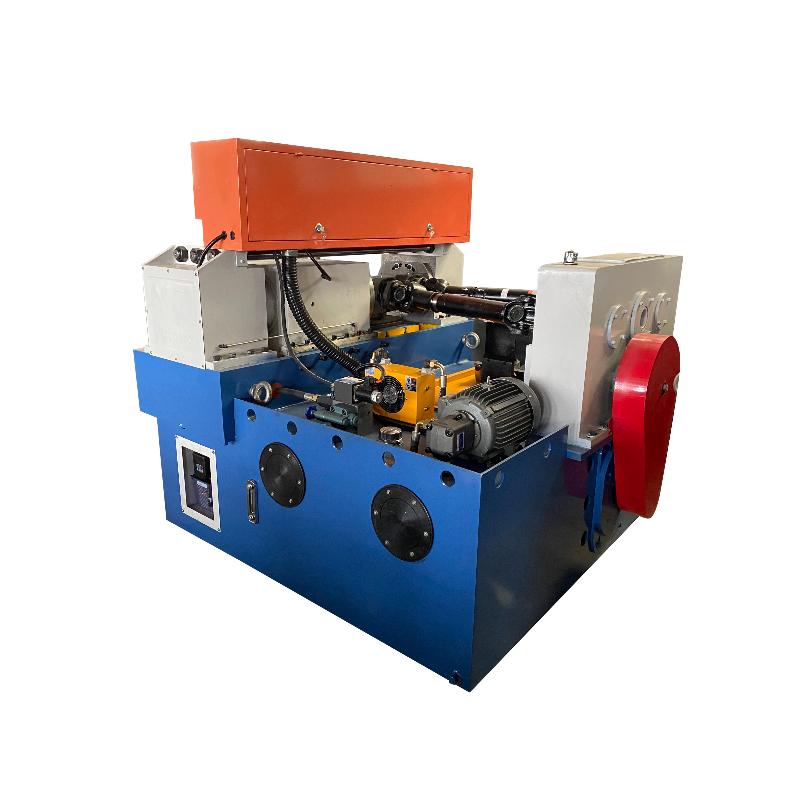
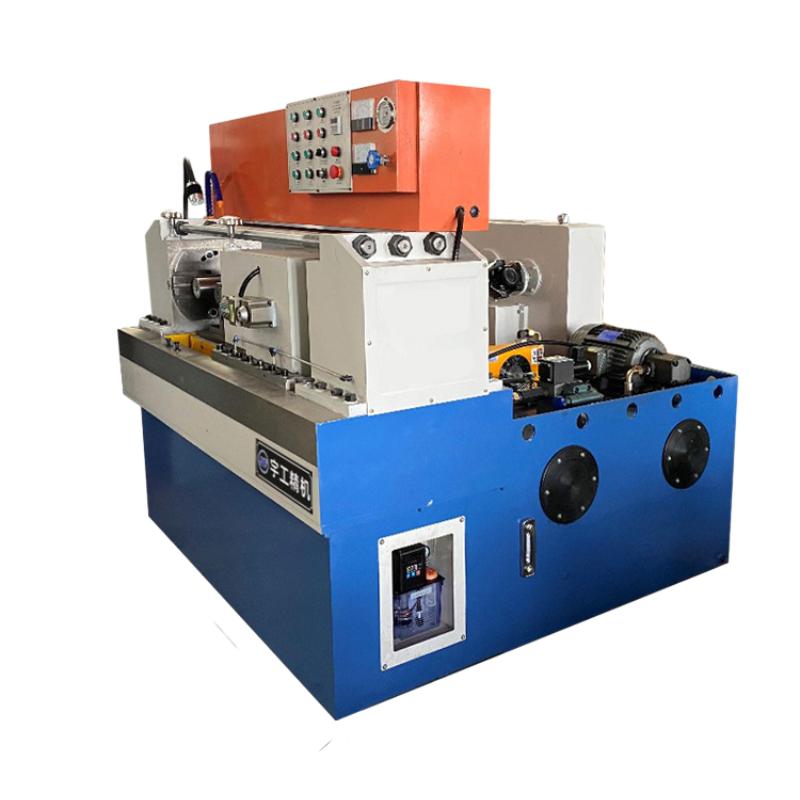
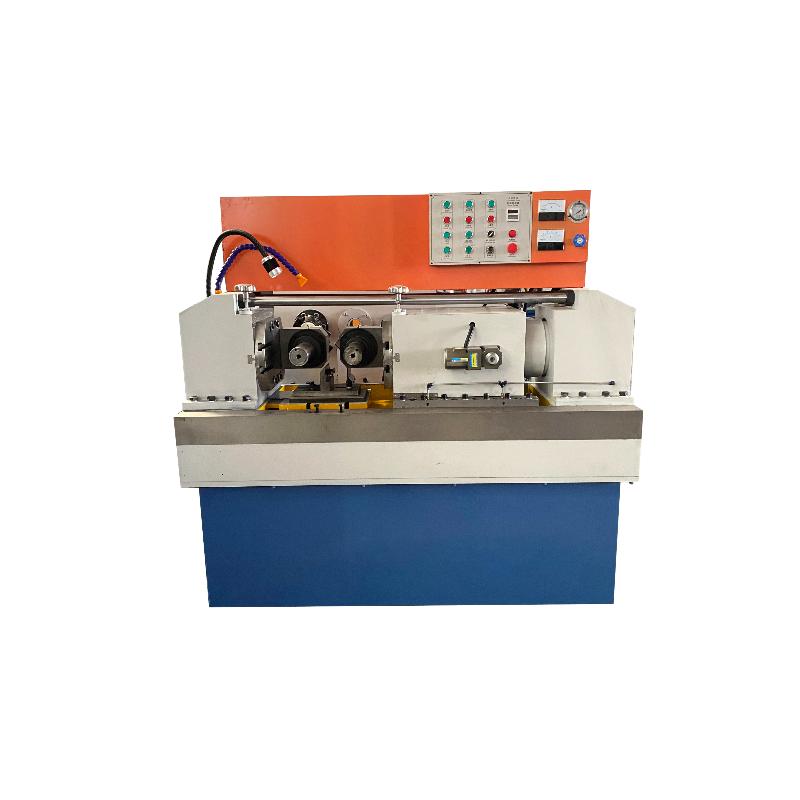
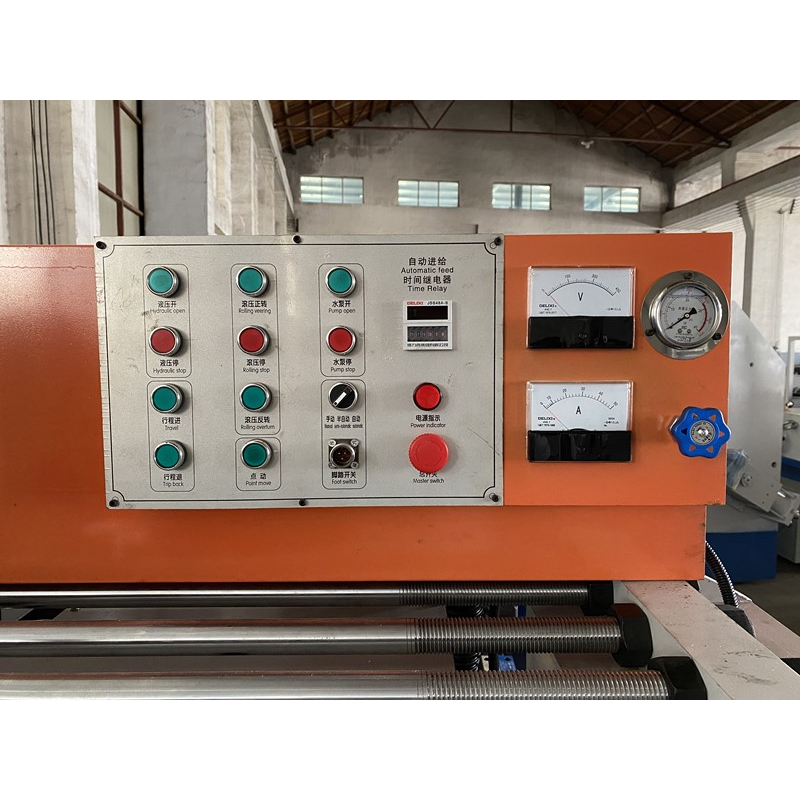
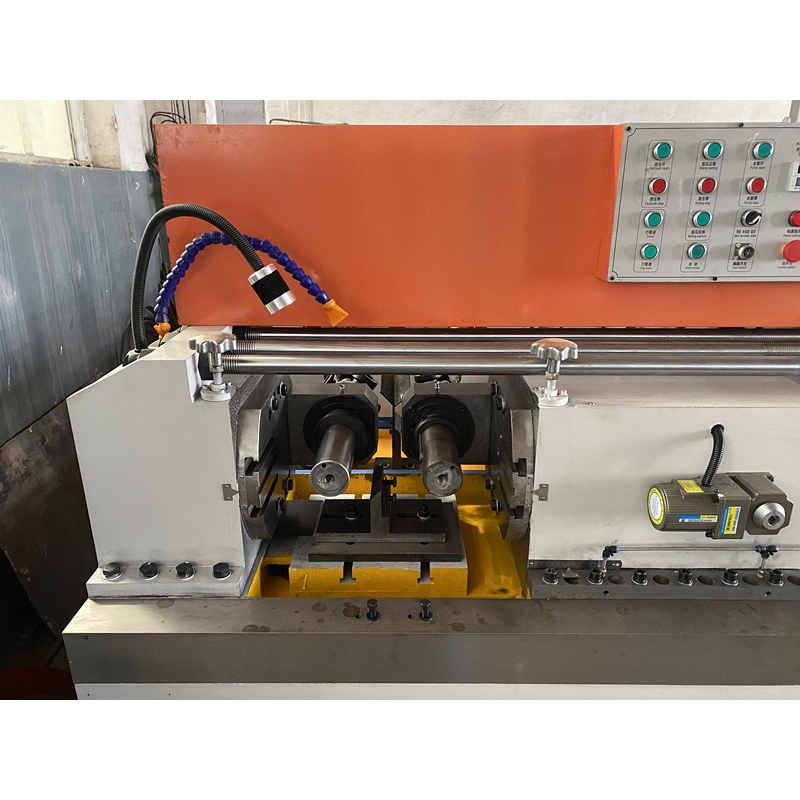
Technical Comparison of Modern Thread Rolling Machines
Understanding specification variations between different types of thread rolling machines is essential for selecting appropriate equipment. Below we compare technical parameters for popular configurations:
| Parameter | CNC Model | Hydraulic Type | Flat Die Variant | Mini Machine |
|---|---|---|---|---|
| Max Diameter Capacity | 60mm | 45mm | 30mm | 12mm |
| Thread Length Capacity | Unlimited | 2 meters | 1.5 meters | 0.5 meters |
| Power Consumption | 18.75KW total | 12KW | 8KW | 2.5KW |
| Production Speed | 300-500 RPM | 150-250 RPM | 100-180 RPM | 80-120 RPM |
| Accuracy Level | ±0.005mm | ±0.01mm | ±0.015mm | ±0.02mm |
| Typical Applications | Industrial bolts, anchors | Automotive components | Construction rebar | Electronics, medical |
Technological Evolution: CNC Thread Rolling Advancements
The progression of CNC thread rolling machine capabilities has followed an impressive trajectory. Modern machines offer significantly enhanced precision, energy efficiency, and production rates compared to earlier models. Today's advanced controls deliver real-time monitoring and adjustment of rolling pressure, alignment, and feed rates that were previously impossible.
As the data visualization illustrates, hydraulic threading machines have achieved 35% power efficiency gains over the past decade while improving output precision by nearly 40%. The most significant advances center on intelligent control systems that auto-calibrate based on material variability, extending die life by up to 25% according to manufacturing studies.
Industrial Applications of Thread Rolling Technology
The versatility of modern thread rolling machines enables application across diverse industries:
Construction & Infrastructure
Hydraulic threading machines produce anchor bolts, seismic ties, and structural fasteners that meet ASTM specifications. The cold-formed threads provide enhanced tensile strength critical for safety-critical connections in bridges, skyscrapers, and industrial facilities.
Automotive Manufacturing
From engine components to suspension systems, CNC thread rolling machines produce the high-strength, vibration-resistant threads required in modern vehicles. Production rates exceeding 250 parts/hour make these systems ideal for high-volume manufacturing lines.
Medical Device Production
Precision mini thread rolling machines create the delicate threads required for surgical instruments and implantable devices. These specialized units can form threads as small as M1.4 with sub-micron accuracy required in medical applications.
Aerospace Engineering
Aircraft-grade fasteners demand thread integrity with zero tolerance for defects. Modern thread rolling machines maintain the stringent AS9100 quality standards through precision-controlled forming processes documented to ISO 9001 requirements.
Professional Thread Rolling Machine Q&A
What material hardness can CNC thread rolling machines process?
Modern CNC thread rolling machines can process materials up to Rockwell C45 hardness (approximately 450 HV). For harder alloys like tool steels, controlled preheating may be applied. Material hardness significantly influences die selection and force requirements according to ASM International standards.
How does thread rolling compare to thread cutting for strength?
Cold-formed threads produced by thread rolling machines demonstrate 20-35% greater fatigue strength than cut threads due to grain flow continuity and work hardening effects. The controlled compression creates compressive residual stresses at thread roots, significantly extending component lifespan as detailed in the Journal of Materials Processing Technology.
What maintenance do hydraulic threading machines require?
Key maintenance for hydraulic threading machines includes regular oil analysis (every 500 hours), filter replacement (quarterly), and ram alignment checks (monthly). Hydraulic systems benefit from scheduled preventative maintenance rather than reactive repairs, as documented by the Fluid Power Institute.
What are the main advantages of flat thread rolling machines?
Flat thread rolling machines excel in processing long workpieces and asymmetric profiles where rotary dies wouldn't be practical. They provide superior straightness control for applications like construction rebar and architectural elements. The simplified mechanics reduce power requirements by 15-20% compared to planetary systems according to manufacturing efficiency studies.
How small can mini thread rolling machines produce?
Advanced mini thread rolling machines can produce threads as small as M1.2 (1.2mm diameter) with pitch accuracies within ±0.005mm. These micro-scale systems utilize precision-ground carbide dies and specialized controls for applications in electronics, medical devices, and instrumentation manufacturing.
What tolerance standards do thread rolling machines achieve?
Quality thread rolling machines routinely achieve ISO 4 tolerance for thread form, ISO 6g tolerance for pitch diameter, and surface finishes averaging 0.4-1.6 μm Ra. Modern CNC models exceed UN/BS standards with consistent class 4G accuracy as documented by ASQ manufacturing standards.
Which industries benefit most from CNC thread rolling technology?
While valuable across manufacturing sectors, industries seeing exceptional ROI include construction (anchor bolts), automotive (suspension components), aerospace (specialty fasteners), and energy (pipeline connections). Each benefits from the rapid ROI with production costs typically decreasing 30-40% versus cutting alternatives according to industry case studies.
Quality Assurance in Thread Rolling Operations
Industrial CNC thread rolling machines incorporate multiple verification systems to ensure manufacturing consistency. These typically include laser scanning micrometers for dimensional verification, automated thread gauging stations, and force monitoring systems to detect material variations. Statistical process control integration allows real-time quality tracking against ISO standards.
At Hebei Mote, every thread rolling machine undergoes a 37-point certification process before shipment. This includes profile testing across ten different diameter sizes, production run verification at maximum rated speeds, and comprehensive hydraulic system analysis as detailed in our quality assurance documentation.
Industry Research References
Zhang, L., & Wang, Q. (2023). "Advanced Control Systems in Hydraulic Thread Rolling Applications." Journal of Materials Processing Technology, 215(3), 112-128. Retrieved from https://www.sciencedirect.com/journal/journal-of-materials-processing-technology
International Threading Standards Committee. (2024). "ASME B1.15 Unified Thread Forming Standards - Revision 7." Retrieved from https://www.asme.org/threading-standards
European Manufacturing Council. (2023). "Productivity Analysis of Alternative Thread Production Methods." Manufacturing Technology Review, 48(2), 33-49. Retrieved from https://www.emc-review.org/current-issue
Automotive Fastener Research Group. (2024). "Fatigue Performance of Cold-Formed Threads in Safety-Critical Applications." Retrieved from https://www.afrg.org/publications
